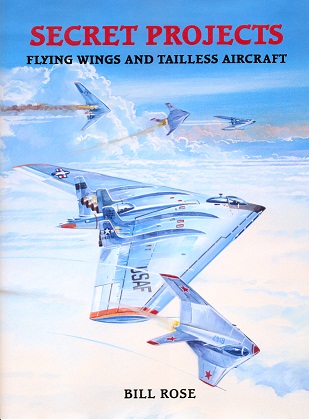
Flying wings and tailless aircraft

michele- M1.0

- Numero di messaggi : 1046
Data d'iscrizione : 29.08.08
Località : Reggio Emilia
- Messaggio n°1
 Flying wings and tailless aircraft
Flying wings and tailless aircraft


michele- M1.0

- Numero di messaggi : 1046
Data d'iscrizione : 29.08.08
Località : Reggio Emilia
- Messaggio n°2
 Re: Flying wings and tailless aircraft
Re: Flying wings and tailless aircraft
Flying wings and tailless aircraft
This brilliant new volume provides a history of secret classified flying wings and tailless aircraft projects.
Designed and developed since the dawn of aviation these aircraft still hold a great importance today, with many aviation enthusiasts eager to learn more about these remarkable aircraft which provided the foundations for the modem aviation scene.
Beginning with an analysis of the advantages of the flying wing, the author looks at why aerodynamicists have been attracted to this unique configuration since the earliest days of manned flight, highlighting a range of specific aircraft and relevant examples, many unfamiliar
to aviation enthusiasts.
Examples developed in the years leading up to World War 2 include designs by the Hortens and Lippisch in Germany and Northrop in the US.
Following this conflict, a number of British flying wings were developed, including early designs for the Vulcan.
Later, during the Cold War era, the US developed a range of aircraft using this versatile technology, with the Northrop B-2 and A-12, oblique wing, blended wing, and supersonic designs.
This book also examines the array of modem day stealth technology which has developed from flying wing and tailless aircraft, with a detailed glimpse at experimental blended wing body designs, which may become the next-generation of larger, fuel-efficient military aircraft.
A fascinating read which is certain to entertain and inform aviation enthusiasts worldwide.
This brilliant new volume provides a history of secret classified flying wings and tailless aircraft projects.
Designed and developed since the dawn of aviation these aircraft still hold a great importance today, with many aviation enthusiasts eager to learn more about these remarkable aircraft which provided the foundations for the modem aviation scene.
Beginning with an analysis of the advantages of the flying wing, the author looks at why aerodynamicists have been attracted to this unique configuration since the earliest days of manned flight, highlighting a range of specific aircraft and relevant examples, many unfamiliar
to aviation enthusiasts.
Examples developed in the years leading up to World War 2 include designs by the Hortens and Lippisch in Germany and Northrop in the US.
Following this conflict, a number of British flying wings were developed, including early designs for the Vulcan.
Later, during the Cold War era, the US developed a range of aircraft using this versatile technology, with the Northrop B-2 and A-12, oblique wing, blended wing, and supersonic designs.
This book also examines the array of modem day stealth technology which has developed from flying wing and tailless aircraft, with a detailed glimpse at experimental blended wing body designs, which may become the next-generation of larger, fuel-efficient military aircraft.
A fascinating read which is certain to entertain and inform aviation enthusiasts worldwide.

